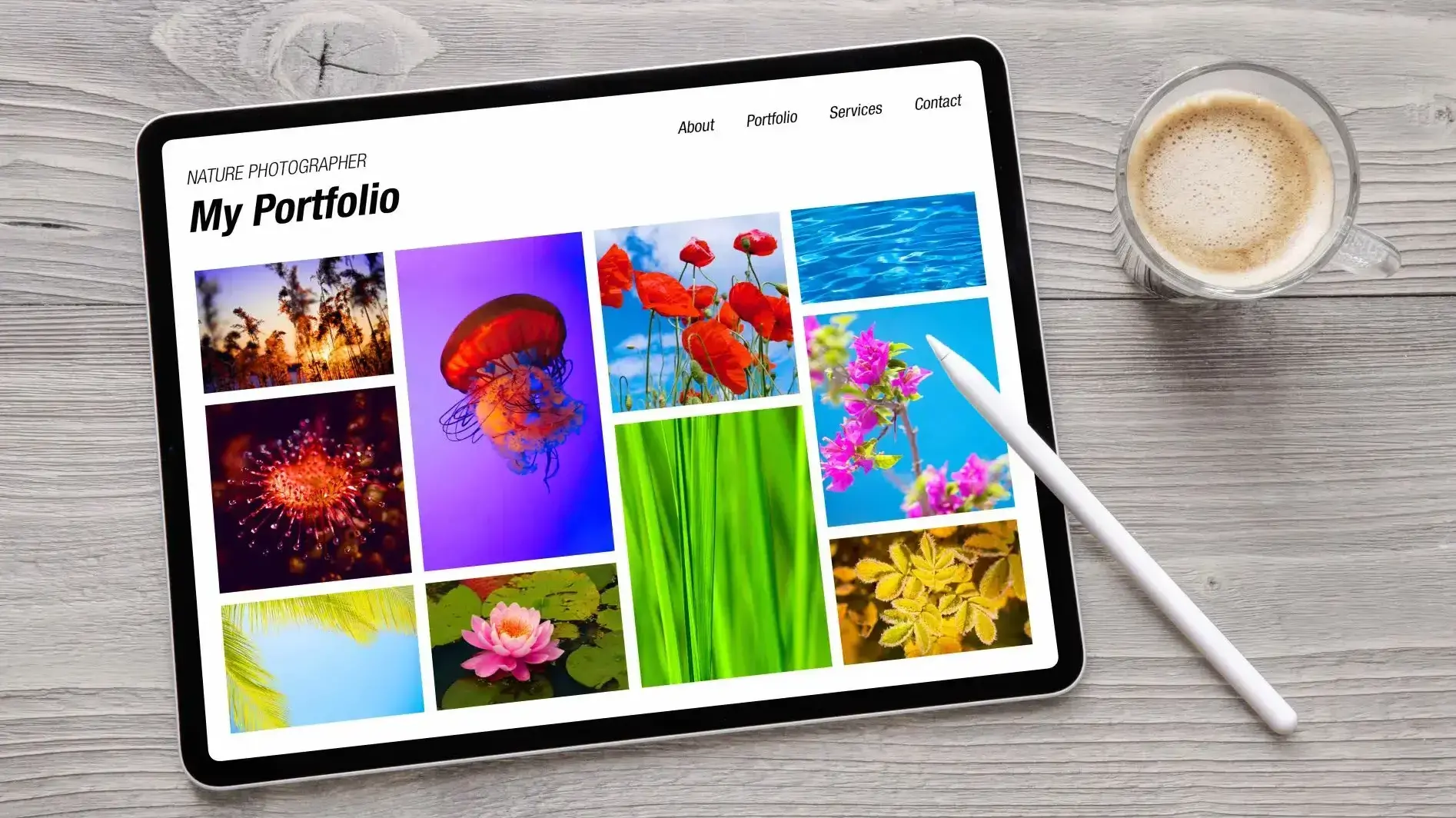In the age of digital content, visual communication reigns supreme. From social media to advertising campaigns, high-quality images are in constant demand. For photographers, this presents a unique opportunity to monetize their passion and skill by selling digital photos. Whether you're a seasoned professional or a hobbyist with an eye for compelling visuals, the digital marketplace offers a wealth of avenues to turn your photographs into a sustainable income stream.
This article will delve into the advantages of selling digital photos, provide a step-by-step guide on how to get started, offer valuable tips, explore various app resources and comparisons, illustrate practical use cases, and conclude with a roadmap for success.
The Benefits of Monetizing Your Photography Online
Selling photography online offers several key benefits over traditional photography methods: It leverages the vast reach of the internet, connecting your work with a global audience instantaneously. Furthermore, this modern photography online approach streamlines the entire sales process, from initial upload to final delivery, making it more efficient and accessible for photographers.
- Passive Income Stream
Once uploaded, your photos can generate revenue continuously without requiring ongoing active effort. This allows for scalability and enables you to focus on creating new content while your existing portfolio earns income.
- Reduced Logistics and Overhead
The digital format eliminates the need for printing, framing, and shipping physical prints. This significantly lowers operational costs and removes geographical barriers, allowing you to reach a global audience.
- Diverse Platforms and Licensing Options
The digital marketplace provides a wide array of platforms (e.g., stock agencies, e-commerce sites) and flexible licensing models (e.g., royalty-free, rights-managed). This allows you to cater to different client needs and maximize your earning potential, whether selling for commercial use or fine art.
- Creative Control and Brand Building
You retain full creative control over your work, including setting your own prices and licensing terms. This autonomy empowers you to build a personal brand that reflects your unique artistic vision.
- Instant Feedback and Analytics
Digital platforms provide immediate access to sales data and analytics. This allows you to track performance, identify popular images, understand audience preferences, and refine your sales strategy based on real-time insights.
From Click to Cash: Your Guide to Selling Digital Photos
Ready to turn your passion for photography into a profitable venture? This comprehensive guide will walk you through every essential step, transforming your stunning captures into a reliable income stream.
1. Define Your Niche and Target Audience
Identify your photographic strengths and the types of images that resonate with you. Are you passionate about landscapes, portraits, wildlife, or abstract art? Understanding your niche will help you curate a cohesive portfolio and attract a specific audience. Research market trends and identify gaps in existing stock photo libraries to find opportunities to differentiate your work.
2. Build a High-Quality Portfolio
Invest time in curating a portfolio that showcases your best work. Ensure your photos are technically sound, with proper composition, lighting, and focus. Edit your images carefully to enhance their visual appeal and maintain consistency across your portfolio. Build a website or online portfolio to display your work professionally.

3. Choose the Right Platforms
Select platforms that align with your niche and target audience. Stock photo agencies like Shutterstock, Adobe Stock, and iStock offer broad exposure and high traffic volume, while platforms like Etsy and Fine Art America cater to artists selling prints and fine art. Consider building your own e-commerce website using platforms like Shopify or WooCommerce for greater control and branding.
4. Understand Licensing and Pricing
Familiarize yourself with different licensing models, such as royalty-free, rights-managed, and Creative Commons. Set competitive prices based on market research and the value of your images. Consider offering tiered pricing for different licensing options and image resolutions.
5. Optimize Your Images for Search
Use relevant keywords and picture metadata to make your images discoverable on stock photo platforms and search engines. Write descriptive captions and titles that accurately reflect the content and context of your photos. Utilize alt text for images on your website to improve accessibility and SEO.

6. Market Your Photos Effectively
Promote your work through social media, email marketing, and online communities. Engage with potential buyers and build relationships with industry professionals. Consider running targeted advertising campaigns to reach a wider audience.
7. Provide Excellent Customer Service
Respond promptly to inquiries and provide clear and helpful information about your images and licensing terms. Build a reputation for reliability and professionalism to foster repeat business and positive reviews.
8. Track Your Sales and Analyze Performance
Monitor your sales data to identify popular images, track revenue trends, and evaluate the effectiveness of your marketing efforts. Use analytics tools to understand your audience and optimize your strategy.
Tips for Success in Selling Digital Photos
Navigating the competitive landscape of digital photo sales requires more than just great images; it demands a strategic approach. To maximize your earning potential and build a sustainable photography business, consider these essential tips that go beyond the basics of uploading and waiting.
Specialize: Focus on a specific niche to establish yourself as an expert and attract a dedicated audience. This focus allows you to develop a deep understanding of your target market's needs and create highly relevant content that stands out.
Stay Updated: Keep up with the latest trends in photography and design to ensure your work remains relevant and in demand. This includes staying informed about popular aesthetics, emerging technologies, and changing licensing requirements.
Invest in Quality Equipment: Use high-resolution cameras and professional editing software to produce top-notch images. While skill is paramount, quality gear ensures your technical output meets professional standards and allows for greater versatility in post-processing.

Shoot Regularly: Build a consistent workflow and capture new content regularly to expand your portfolio. The more high-quality images you have available, the more opportunities you create for sales and visibility.
Experiment with Different Styles: Explore various photographic techniques and approaches to develop a unique visual style. This ongoing artistic exploration can help you discover new creative avenues and keep your work fresh and engaging.
Network with Other Photographers: Connect with fellow photographers to share knowledge, collaborate on projects, and gain exposure. Building relationships within the community can lead to valuable insights, mentorship, and even joint opportunities.
Offer Exclusive Content: Provide exclusive photos or bundles to subscribers or loyal customers to incentivize purchases. This creates a sense of value and exclusivity, encouraging repeat business and stronger customer loyalty.
Participate in Contests and Exhibitions: Gain recognition and exposure by showcasing your work in photography competitions and exhibitions. Winning awards or being featured can significantly boost your credibility and attract new buyers.
Leverage Social Media: Utilize social media platforms to showcase your work, engage with your audience, and drive traffic to your portfolio. Consistent posting and strategic use of hashtags can expand your reach exponentially.
Build an Email List: Collect email addresses from website visitors and social media followers to nurture leads and promote new content. An email list provides a direct and powerful channel for communicating with your most interested audience.
Be Patient and Persistent: Building a successful photography business takes time and effort. Stay committed to your goals and continue to refine your strategy, as consistent effort over time will yield the best results.
The Best Places to Sell Digital Photos Online
When considering where to sell digital photos, it's essential to understand that different platforms cater to different types of photography and offer varying commission structures and audience reach. Your choice will depend on your goals (e.g., maximum exposure, higher control, specific niche), the type of photos you shoot, and your preferred level of involvement.
Here are the primary categories of platforms where you can sell digital photos:
1. Stock Photography Agencies
These are among the most popular avenues for selling digital photos for commercial use. They act as marketplaces where businesses, marketers, and designers can license images for various purposes (websites, advertisements, publications, etc.).
Known for its diverse collection and generally higher commission rates (up to 50% for exclusive content). They accept a wide range of subjects, including more niche and editorial content.
A well-established stock photo agency offering both exclusive and non-exclusive contracts with varying commission rates.
It combines a strong photography community with a marketplace. It emphasizes high-quality submissions and can offer good royalty rates, especially for exclusive photos.
Vecteezy is a major stock media platform with vectors, videos, and photos. For photographers, it presents a compelling option, particularly due to its hybrid model that includes both free and Pro (subscription-based) content.
A unique platform that allows photographers to sell images directly to brands through "missions" or open market sales.
2. Your Own Website / E-commerce Store
For photographers who want maximum control over their brand, pricing, and customer relationships, building a personal website is an excellent option.
A powerful e-commerce platform that allows you to build a fully customizable online store. You control everything from product display to pricing and marketing. Ideal for selling both digital licenses and physical prints.
A free WordPress plugin that turns your WordPress site into a robust e-commerce store. Offers extensive customization and is great if you already have a WordPress site.
A popular platform specifically designed for photographers to create professional portfolios and sell prints and digital downloads. It handles printing and shipping for physical products.
Allows you to build a free photography store and portfolio, set your own prices for both prints and digital downloads, and handles logistics like production and shipping.
Similar to SmugMug, offering website building, client galleries, and e-commerce features for photographers.
3. Art and Craft Marketplaces
These platforms are ideal if you're selling digital photos primarily as fine art prints or unique photographic products, rather than for commercial licensing.
While known for handmade goods, Etsy is also a popular marketplace for selling digital downloads (e.g., printable art, digital wallpapers) and physical prints of your photography. It attracts a global audience looking for unique items.
Specializes in selling art prints (including photography) on various mediums (canvas, metal, acrylic) and merchandise. They handle printing, framing, and shipping.
4. Niche-Specific Platforms
Some platforms cater to very specific types of photography.
Tailored for event and portrait photographers, making it easy to create galleries and sell photos directly to attendees or clients.
Primarily known for stock video, but also offers opportunities to sell high-quality stock photos, especially if you also work with video.
Real-World Scenarios for Digital Photo Sales
This section provides real-world examples of how businesses and individuals value your visual assets.
Stock Photography: Selling images for commercial use, such as advertising, marketing, and website design.
Fine Art Prints: Selling limited edition or open edition prints of your photographs for personal collections and home decor.
Editorial Photography: Selling images to magazines, newspapers, and online publications for news and feature stories.
Travel Photography: Selling images of travel destinations to travel agencies, tourism boards, and travel publications.
Wildlife Photography: Selling images of animals and nature to conservation organizations, educational institutions, and wildlife enthusiasts.
Product Photography: Selling images of products for e-commerce websites and marketing materials.
Social Media Content: Selling images to businesses and individuals for use on social media platforms.
Website Design: Selling images to website designers and developers for use in website templates and layouts.
Greeting Cards and Invitations: Selling images for use in greeting cards, invitations, and other printed materials.
Digital Wallpapers and Backgrounds: Selling images for use as digital wallpapers and backgrounds for computers and mobile devices.
Conclusion
Selling digital photos presents a lucrative opportunity for photographers to monetize their talent and passion in the digital age. By understanding the advantages, following a structured approach, utilizing the right tools, and implementing effective marketing strategies, you can build a successful photography business.
Always keep in mind to specialize in a niche, prioritize quality, stay updated with industry trends, and provide excellent customer service. The digital marketplace is constantly evolving, so adaptability and continuous learning are essential for long-term success. By embracing the opportunities and challenges of this dynamic field, you can transform your love for photography into a sustainable and rewarding career.
Frequently Asked Questions
How to start selling photography?
To sell photography, you can use stock photo marketplaces like Adobe Stock or Shutterstock, or you can create your own website.
What is the best way to sell your photography?
The best place to sell your photography is through your own website. To create a website, you don’t need coding knowledge. Instead, you can use a website builder or a CMS.
What are the best practices for posting wedding photos and videos on our website?
Create a gallery page for photos and videos. Choose high-quality images, organize them logically, and consider creating different albums for various events.
Is it easy to manage my photos with Image Gallery Hosting?
Managing your photos is simple with cPanel, an intuitive control panel included in Image Gallery Hosting plans. You can upload, organize, and edit your photo collections effortlessly. Plus, features like automatic backups and resource monitoring keep everything running smoothly.

Audee Mirza is a graphic designer and WordPress developer at audeemirza.com who resides in Surabaya, Indonesia. She's also the author of Graphic Identity Blog, a professional logo designer, and often creates vector illustrations for clients and marketplaces. She enjoys good typography design and all kinds of animation.
View all posts by Audee Mirza




















